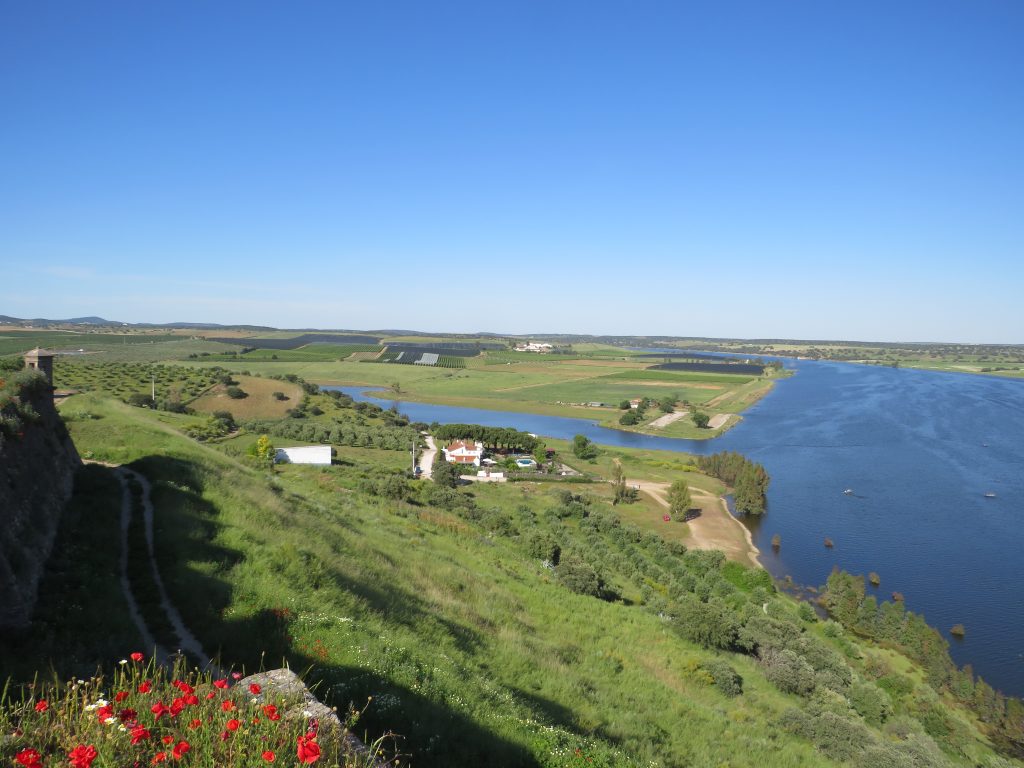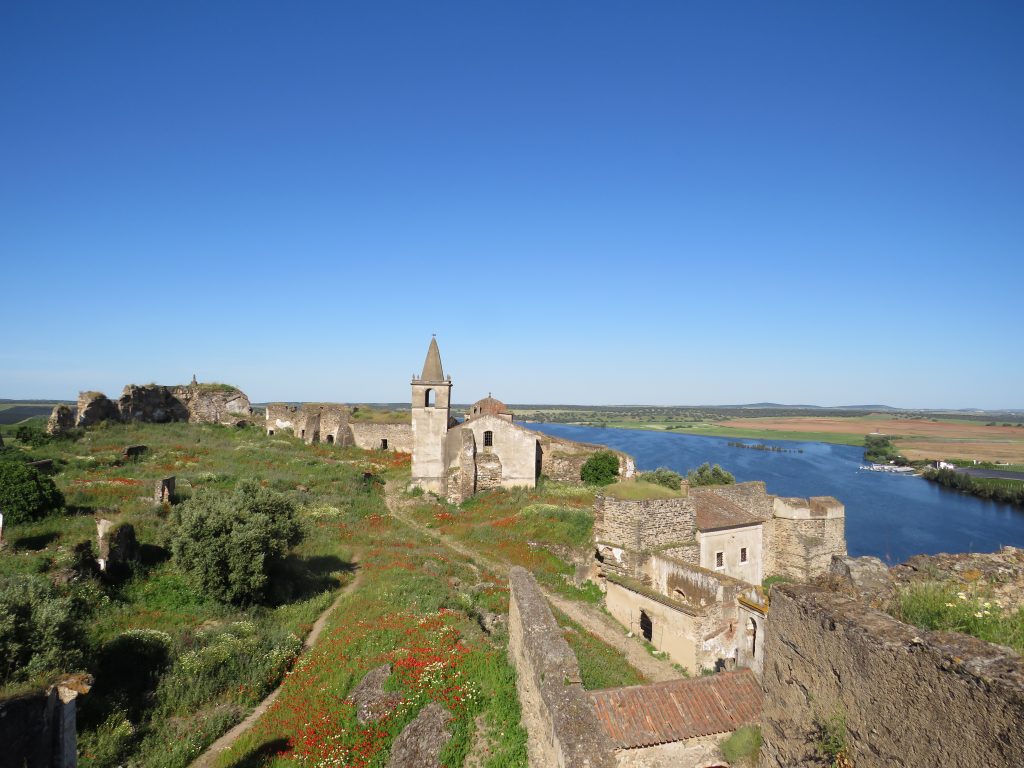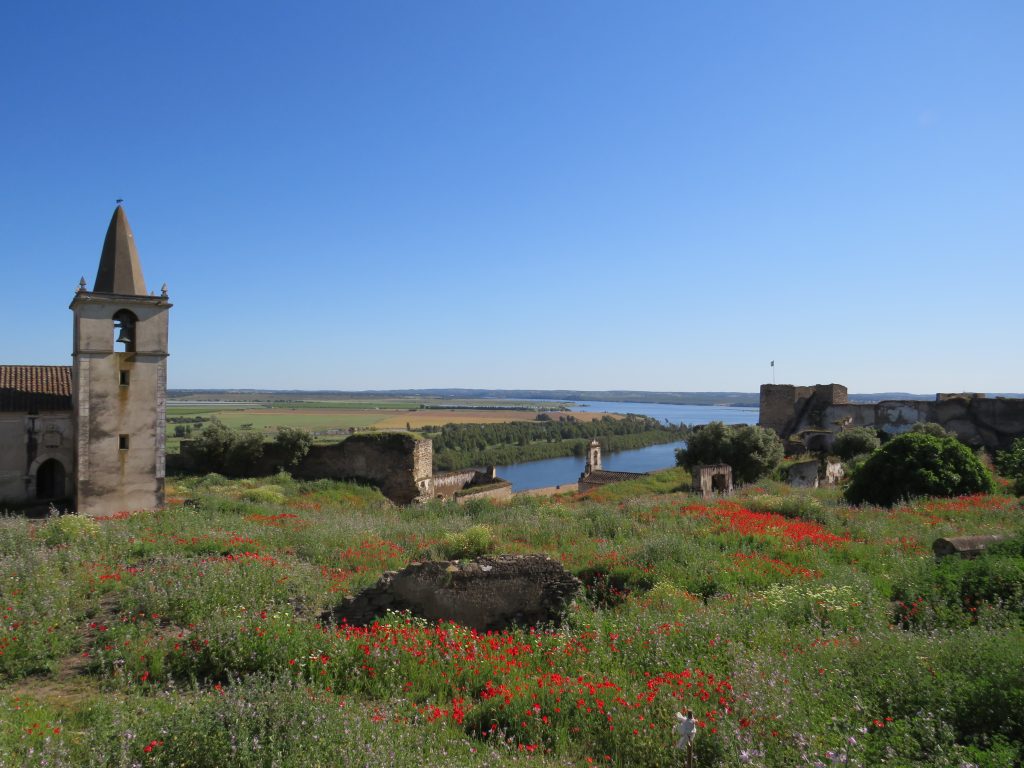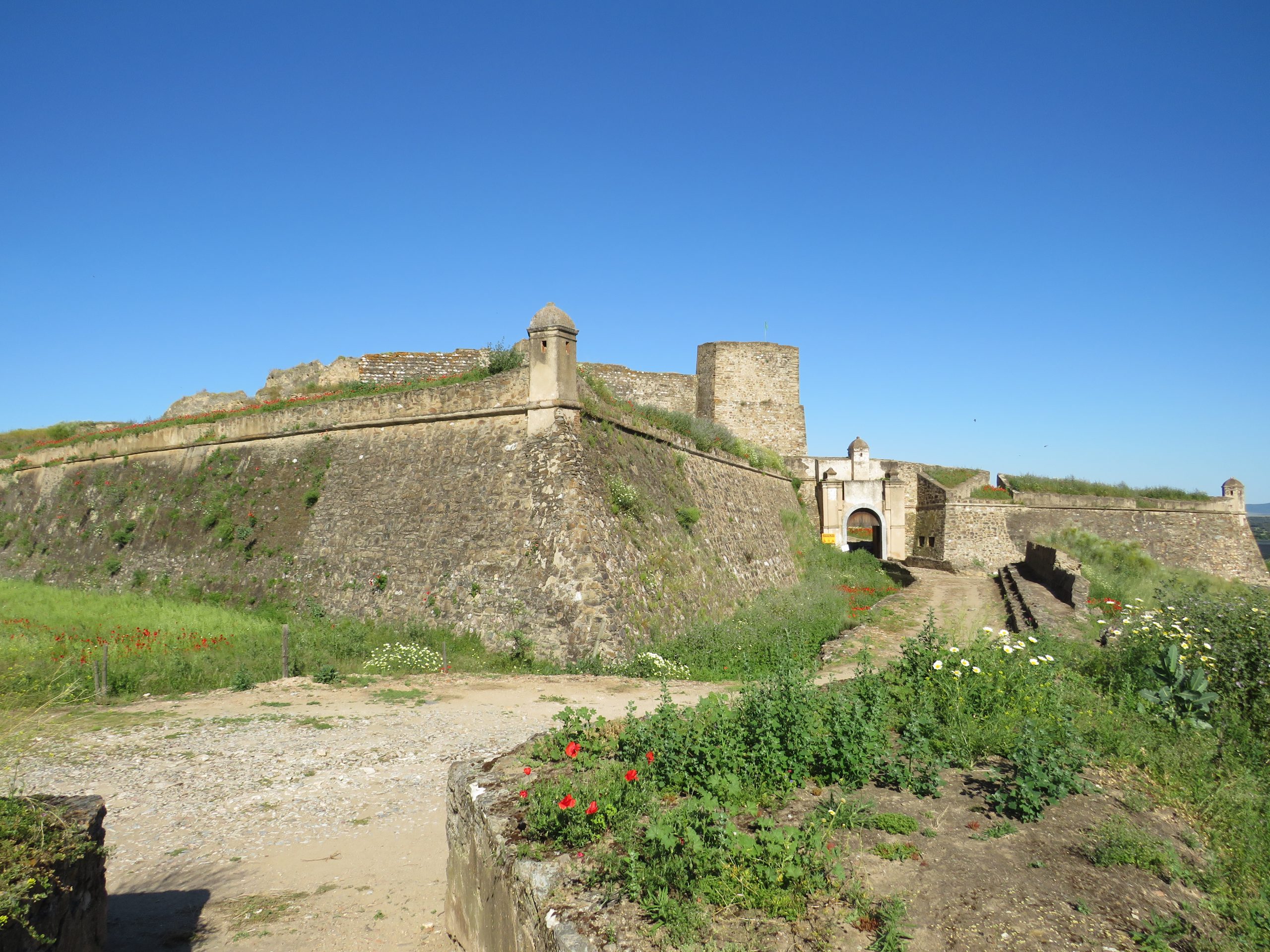If you are looking for stunning views and places with amazing history, the Alentejo is the right place for just that. One of our latest discoveries is the small hamlet of Juromenha, just a stone throw away from neighboring Spain.
A handful of whitewashed houses overlooks the Guadiana river, the natural border between the Alentejo region on the Portuguese side and the autonomous community of Extremadura on the Spanish side. Some of these are for sale and offer great views over the river landscape.

The one building however that can’t be missed in Juromenha is the old fortress, built at this strategic location. Celts and romans already valued the spot overlooking the Guadiana, but for many centuries it was an outpost of the city of Badajoz, then part of the Cordoba Caliphate.
Conquered during the Reconquista in 1167 by the first Portuguese King, D. Afonso Henriques, Juromenha was later reclaimed by Muslim forces and only came under definite Christian rule in 1242.
Many centuries later, in the year 1580 to be precise, Portugal would lose its independence and would be ruled by Spanish Monarchs. The Iberian Union would last for 60 years and only in 1640 did the Portuguese start to reclaim their independence. Regaining independent rule was a long and hard struggle which lasted 28 years. During this period, many Portuguese border fortresses were fortified and received additional features, according to the latest military technology, as by this time engineers had to take into account the devastating effect of canons.

Juromenha too received new walls and defensive features and the construction works were overseen by the French military engineer Nicolas de Langres. Langres’s plans were approved in 1646 and by 1659 the works were still underway when disaster struck. Huge quantities of gun powder stored in one of the magazines suddenly ignited and caused an explosion that obliterated many of the newly built walls. 103 people died, including many students of the University of Évora who had been serving in Juromenha.
Unfortunately, Langres was not killed in the explosion. We say unfortunately, because the French engineer later switched sides and personally commanded the Spanish artillery attack of 1662 which destroyed the walls he once had built. Juromenha was conquered in that year and remained in Spanish hands until 1668.
Like with almost all building in southern Portugal, the fortress of Juromenha was severely damaged by the 1755 Lisbon earthquake. Despite Juromenha being a 160 kilometers away from Lisbon and the epicenter of the seismic event estimated to have been located at the Gorringe Ridge (130miles soutwesth from Cape Sr. Vincent), the heavy walls of Juromenha crumbled. The effects of the earthquake were felt even in Spain, with many people killed and buildings being damaged in places like, Sevilla, Jaén, Salamanca and even Valladolid.

The Juromenha fortress and the medieval castle inside it are today abandoned. As romantic and picturesque as it may look, it is a shame that such an historic monument is in this state. Some plans to turn it into a luxury resort have been made in the past but not much came out of it. There is currently a sign on the entrance announcing repairs; we hope the works will commence soon as to preserve this important monument to the history of Portugal and Alentejo.



0 Comments